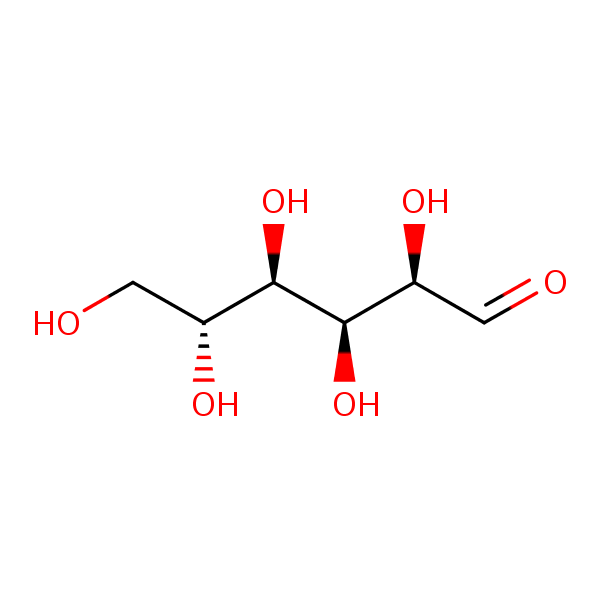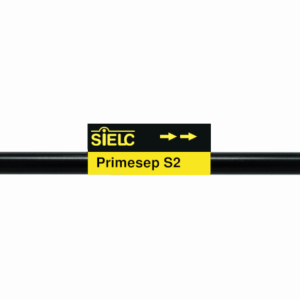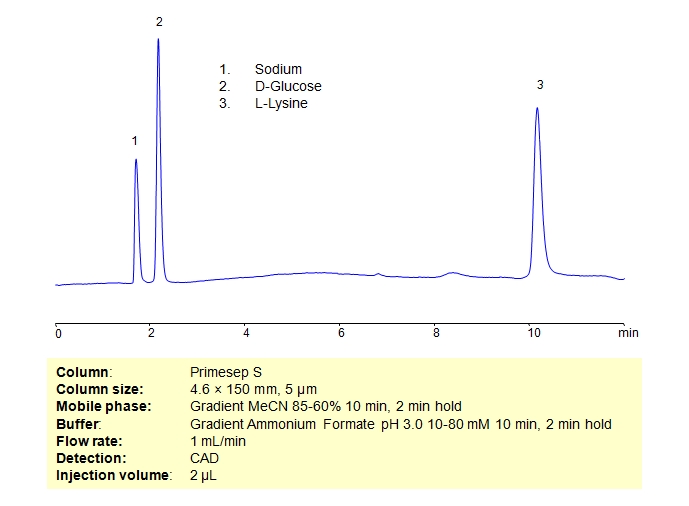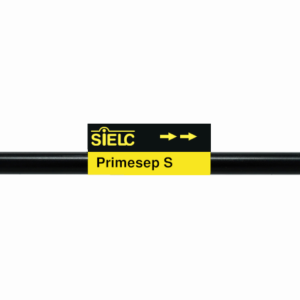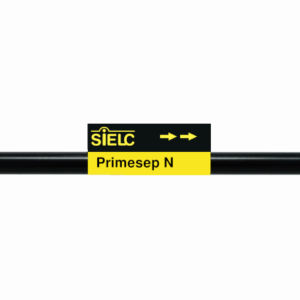| CAS Number | 50-99-7 |
|---|---|
| Molecular Formula | C6H12O6 |
| Molecular Weight | 180.156 |
| InChI Key | WQZGKKKJIJFFOK-GASJEMHNSA-N |
| LogP | -3.24 |
| Synonyms |
|
Applications:
HPLC Method for Separation of Glucose and Lysine on Primesep S Column
January 25, 2023
HPLC Method for Separation of Glucose and Lysine on Primesep S by SIELC Technologies
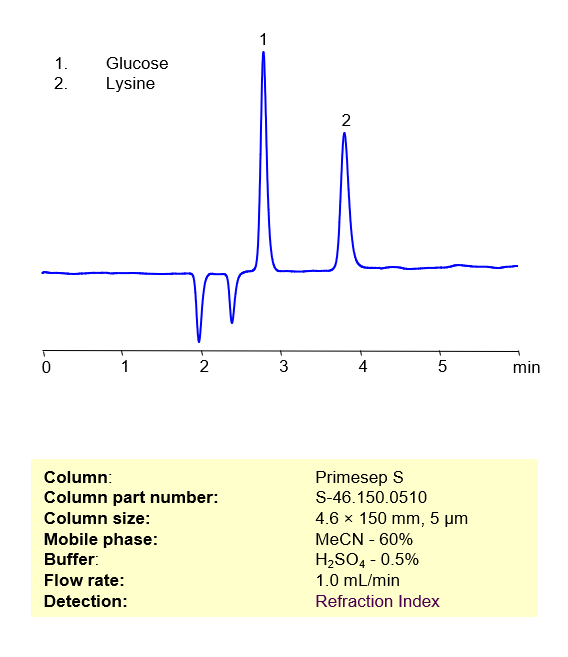
Lysine is an essential amino acid typically found in meat, and also cereal grains. It can be manufactured on a large scale by fermenting glucose, one of the most abundant sugars in the world. These two biological compounds can be retained, separated, and analyzed on a normal-phase Primesep S column with a simple isocratic mobile phase consisting of Acetonitrile (MeCN), water (H2O), and Sulfuric acid (H2SO4). This analysis method can be detected via Refraction Index (RI) Detection.
High Performance Liquid Chromatography (HPLC) Method for Separation of Glucose and Lysine
Condition
| Column | Primesep S , 4.6×150 mm, 5 µm, 100A |
| Mobile Phase | MeCN/H2O – 75/25% |
| Buffer | H2SO4 – 0.5% |
| Flow Rate | 1.0 ml/min |
| Detection | Refraction Index |
| Peak Retention Time | 4.81 min |
Description
| Class of Compounds | Drug |
| Analyzing Compounds | Glucose, Lysine |
Application Column
Primesep S2
Column Diameter: 4.6 mm
Column Length: 150 mm
Particle Size: 5 µm
Pore Size: 100 A
Column options: dual ended
Lysine

HPLC Separation of Mixture of D-Glucose and L-Lysine on Primesep S Column
February 7, 2019
HPLC Method for Glucose, Lysine on Primesep S by SIELC Technologies
High Performance Liquid Chromatography (HPLC) Method for Analysis of Glucose, Lysine.
Sodium, which has a chemical symbol of Na, is a soft alkali metal that is highly reactive. It is found in abundance in everyday materials like table salt, sea water, and even the Earth’s crust. It is crucial for the body’s function and fluid balance.
D-Glucose is a simple sugar that is generated during photosynthesis. In humans, it is produced during hepatic gluconeogenesis. In many living organisms, it acts as an essential energy source. It is the most commonly occurring isomer of glucose in nature. It’s chemical formula is C₆H₁₂O₆.
L-Lysine is an essential amino acid with the chemical formula C6H14N2O2. As an amino acid, lysine is a building block for proteins. It’s crucial for health, but the body can’t produce it, so it must come from the diet. Lysine has been used in supplements to improve athletic performance, support immune health, and more. It’s also integral in the production of carnitine, a nutrient responsible for converting fatty acids into energy and helping to lower cholesterol.
Glucose, Lysine can be retained and analyzed using the Primesep S stationary phase column. The analysis utilizes a gradient method with a simple mobile phase consisting of water and acetonitrile (MeCN) with an ammonium formate buffer. Detection is performed using CAD.
| Column | Primesep S, 4.6 x 150 mm, 5 µm, 100 A, dual ended |
| Mobile Phase | Gradient MeCN – 85-60%, 10 min 2 min hold |
| Buffer | Gradient AmFm pH 3.0, 10-80 mM, 10 min 2 min hold |
| Flow Rate | 1.0 ml/min |
| Detection | CAD (Corona) MS- compatible mobile phase |
| Class of Compounds |
Sugar, Amino Acid, Hydrophilic, Ionizable, Vitamin, Supplements |
| Analyzing Compounds | Glucose, Lysine |
Application Column
Primesep S
Column Diameter: 4.6 mm
Column Length: 150 mm
Particle Size: 5 µm
Pore Size: 100 A
Column options: dual ended
Lysine

HPLC Separation of Sugars on Primesep S2 Column
July 14, 2011
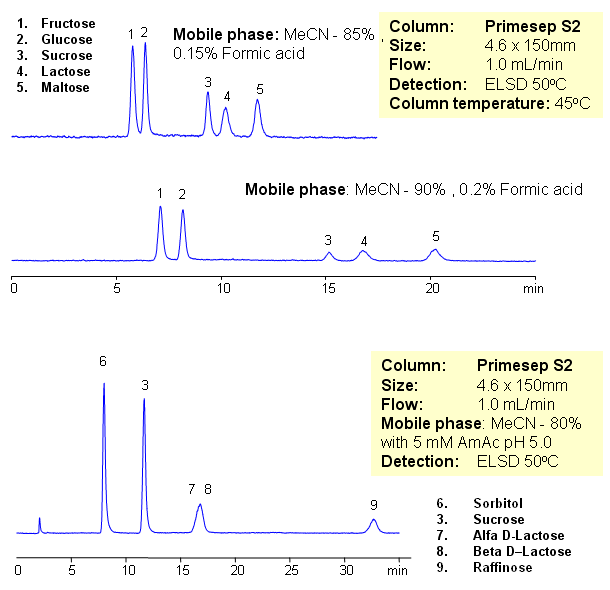
Five sugars were separated on a Primesep S2 HILIC column with LC/MS compatible conditions. Various mobile phase produce different selectivity and separation. Method can be used as alternative to aminopropyl column. Primesep S2 column is stable and does not undergo rapid hydrolysis like aminopropyl columns.
| Column | Primesep S2, 4.6×150 mm, 5 µm, 100A |
| Mobile Phase | MeCN/H2O |
| Buffer | AmAc pH 5.0, Formic Acid |
| Flow Rate | 1.0 ml/min |
| Detection | ELSD 50C |
| Class of Compounds |
Drug, Acid, Monocarboxylic acid, Hydrophilic, Ionizable, Hormone |
| Analyzing Compounds | Fructose, Glucose, Sucrose, Lactose, Maltose, Sorbitol, Sucrose, Alfa D-Lactose, Beta D–Lactose, Raffinose |
Application Column
Primesep S2
The Primesep family of mixed-mode columns offers a wide variety of stationary phases, boasting unprecedented selectivity in the separation of a broad array of chemical compounds across multiple applications. Corresponding Primesep guard columns, available with all stationary phases, do not require holders. SIELC provides a method development service available to all customers. Inquire about our specially-tailored custom LC-phases for specific separations.
Select optionsGlucose
Lactose
Maltose
Raffinose
Sorbitol
Sucrose
alpha-D-Lactose
beta-D-Lactose

Simultaneous Analysis of Glucose, Sodium, Potassium and Calcium Ions
July 8, 2011
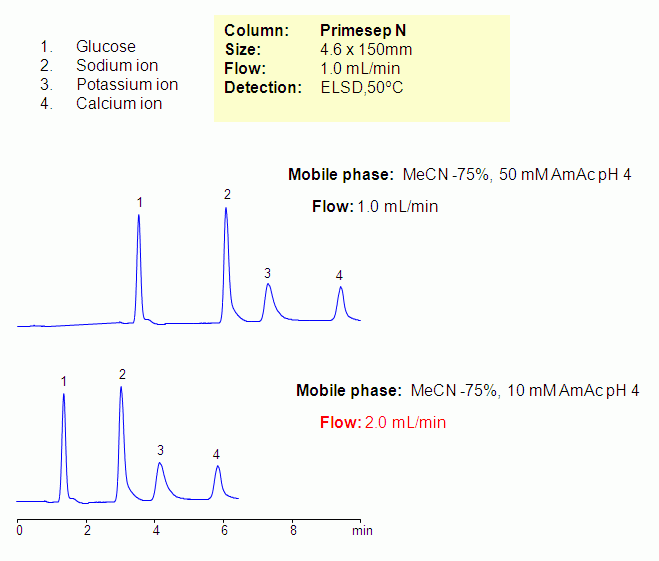
Neutral sugar, monovalent and divalent cations were separated in HILIC/cation-exchange mode on a Primesep N mixed-mode column. Mobile phase is compatible with LC/MS and method can be used for analysis polar molecules in HILIC, cation-exchange or anion-exclusion modes.
| Column | Primesep N, 4.6×150 mm, 5 µm, 100A |
| Mobile Phase | MeCN/H2O |
| Buffer | AmAc pH 4.0 |
| Flow Rate | 1.0 ml/min |
| Detection | ELSD 50C |
| Class of Compounds |
Ions, Hydrophilic, Ionizable |
| Analyzing Compounds | Potassium, Sodium, Calcium, Glucose |
Application Column
Primesep N
Column Diameter: 4.6 mm
Column Length: 150 mm
Particle Size: 5 µm
Pore Size: 100 A
Column options: dual ended
Glucose
Potassium
Sodium

